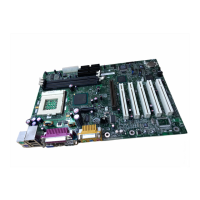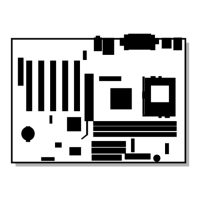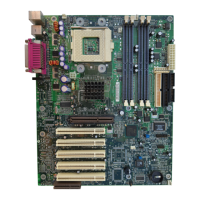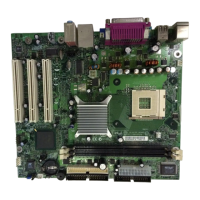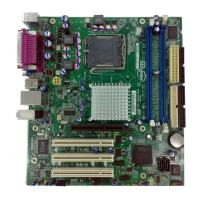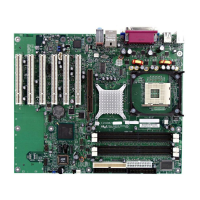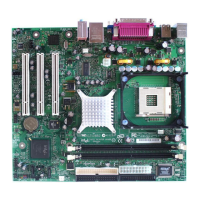Intel Desktop Board D815EEA2/D815EPEA2 Technical Product Specification
40
Table 7. Supported Graphics Refresh Frequencies (continued)
Resolution
Color Palette
Available Refresh
Frequencies (Hz)
Notes
256 colors 60, 70, 72, 75 KDO
256 colors 85 KD
64 K colors 60, 70 KD3O
64 K colors 72, 75, 85 KD3
16 M colors 60 KDO
1152 x 864
16 M colors 75, 85 KD
256 colors 60 (reduced blanking) KDOF
64 K colors 60 (reduced blanking) KD3F
1280 x 768
16 M colors 60 (reduced blanking) KDF
256 colors 60 KDO
256 colors 70, 72, 75, 85 KD
64 K colors 60, 70, 72, 75, 85 KD3
1280 x 1024
16 M colors 60, 70, 75, 85 KD
1600 x 1200
256 colors
60, 70, 72, 75 KD
Notes: K = Desktop
D = DirectDraw
†
3 = Direct3D
†
and OpenGL
†
O = Overlay
F = Digital Display Device only. A mode will be supported on both analog CRTs and digital display devices
(KD3O applies to both types of displays), unless indicated otherwise.
For information about Refer to
Obtaining graphics software and utilities Section 1.3, page 19
1.10.1.2 Digital Video Output (DVO) Connector (Optional)
The D815EEA2 board routes the Intel 82815 GMCH DVO port to an optional onboard 40-pin
DVO connector. The DVO connector can be cabled to a DVI or TV out card to enable digital
displays or TV out functionality. The Digital Visual Interface (DVI) specification provides a
high-speed digital connection for visual data types when using the integrated graphics controller.
This interface is active only when the integrated graphics controller is enabled.
The DVI interface allows interfacing with a discrete Transmission Minimized Differential
Signaling (TMDS) transmitter to enable platform support for DVI compliant digital displays or
with a discrete TV encoder for TV out functionality.
For information about Refer to
The location of the DVO connector Figure 14, page 69
The signal names of the DVO connector Table 32, page 71
Obtaining the DVI specification Table 4, page 20
